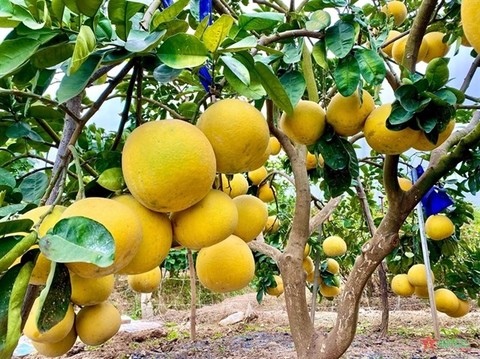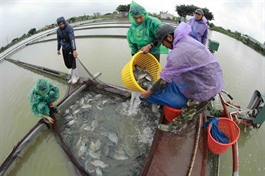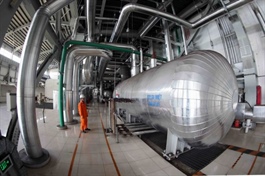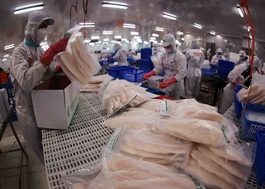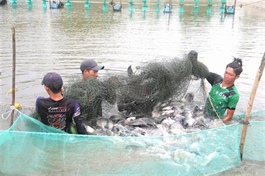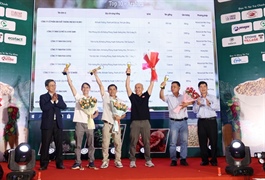Việt Nam expands bird’s nest trade with China, eyes market growth
Việt Nam expands bird’s nest trade with China, eyes market growth
To date, more than four tonnes of refined bird’s nests and millions of processed products worth over US$4 million have been officially exported.

Staff at Thanh Hóa-based Xứ Thanh Bird’s Nest Production and Trading Co., Ltd. inspect harvested bird’s nests. — VNA/VNS Photo |
Thirteen Vietnamese enterprises have officially received approval to export bird’s nest products to China, marking a key step in deepening agricultural trade between the two countries.
The approval comes after four years of implementing protocols on quarantine and inspection requirements for edible bird’s nest exports from Việt Nam to China that were put in place in 2022.
Speaking at a conference on Thursday in Hà Nội, Dương Tất Thắng, director of the Department of Livestock Production and Animal Health under the Ministry of Agriculture and Environment, said Vietnamese businesses have made initial progress in introducing 'Made-in-Việt Nam' bird’s nest products into the Chinese market.
To date, more than four tonnes of refined bird’s nests and millions of processed products worth over US$4 million have been officially exported.
Currently, over 70 Vietnamese companies are engaged in building and upgrading processing facilities to meet export standards. Meanwhile, more than 4,000 swiftlet birdhouses are under disease surveillance, and over 220 product samples have been tested for food safety indicators.
Việt Nam’s Ministry of Agriculture and Environment and China’s General Administration of Customs signed a new protocol on April 15 to expand the range of exportable products. This updated agreement covers both refined and raw bird’s nest products, replacing the 2022 protocol. The move is expected to open up broader opportunities for Việt Nam’s bird’s nest industry in the world’s largest consumer market.
However, experts noted that current export volumes remain modest compared to Việt Nam’s production potential and China’s enormous demand.
One key reason is Việt Nam’s late entry into the Chinese market, with the country trailing behind Malaysia and Indonesia by over a decade. As a result, Chinese consumers are less familiar with Vietnamese bird’s nest brands.
In addition, the COVID-19 pandemic severely affected China’s economy, reducing consumer spending – especially on luxury health products like bird’s nests. Việt Nam’s higher production costs, outdated technology and less competitive product design have also limited its ability to compete with established exporters.

Staff at Thanh Hóa-based Xứ Thanh Bird’s Nest Production and Trading Co., Ltd. inspect harvested bird’s nests. — VNA/VNS Photo |
Locally, the Vietnamese market is also facing competition from cheaper imports. Many low-cost bird’s nest products from Malaysia and Indonesia are entering Việt Nam, putting pressure on domestic producers.
Despite these challenges, recent years have seen increased investment in the sector. Several large firms are applying advanced technologies in hatchery management, artificial breeding, birdhouse construction, harvesting and processing. Some businesses have established quality inspection centres and implemented traceability systems to meet export requirements.
Farmers are receiving more training in swiftlet farming and harvesting techniques, and cooperative models are gradually being developed. However, the industry still faces structural weaknesses. Most swiftlet farming remains spontaneous, lacking a coordinated production plan or industry-wide branding. Many swiftlet birdhouses are not yet officially recognised as property assets, and there are still no standardised construction or operation guidelines.
Quality management and traceability also remain inconsistent. In some cases, poor advice from consultants has led to economic losses for farmers and a decline in product quality and yield.
To fully seize the opportunity created by the new protocol, Thắng stressed the importance of linking production with science and technology innovation, diversifying product lines and strengthening brand development.
He also called for building a closed value chain from production to processing and consumption, with processing enterprises playing a leading role in setting standards and providing market orientation.
“Deep processing and strategic branding will be key to increasing the value of bird’s nest products,” he said. “The new protocol is an important milestone. But for Việt Nam to gain a strong foothold in the Chinese market, we must improve product quality, build consumer trust and promote the reputation of Vietnamese bird’s nest brands.”
As of 2024, 40 out of Việt Nam’s 63 provinces and cities have swiftlet birdhouses, totalling 29,320 nationwide. Kiên Giang Province leads with 2,981 birdhouses, followed by Tiền Giang Province (1,732), Đắk Lắk Province (1,725), and Bình Thuận Province (1,680).
- 16:02 08/05/2025




